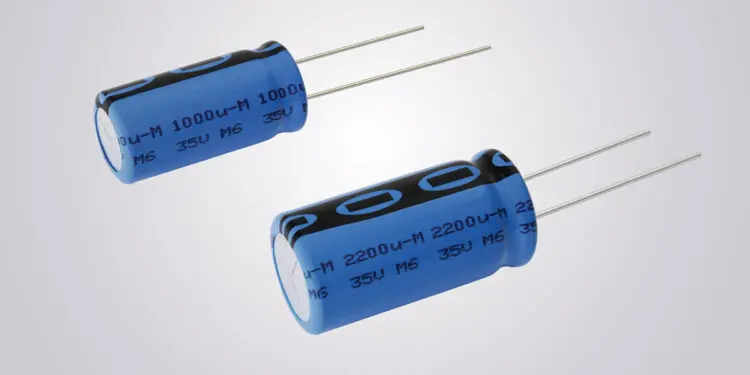Vishay Intertechnology, Inc. introduced a new series of low impedance, Automotive Grade miniature aluminum electrolytic capacitors that combine high ripple currents up to 3.36 A with high temperature operation to +125 °C and very long useful life of 6,000 h at 125 °C.
Compared to previous-generation solutions, Vishay BCcomponents 190 RTL series capacitors offer lower impedance and 10 % to 15 % higher ripple current. This allows designers to utilize fewer components, increasing design flexibility and saving board space. In addition, the AEC-Q200 qualified devices are available in smaller case sizes, ranging from 10 mm by 12 mm up to 18 mm by 35 mm.
Featuring radial leads and a cylindrical aluminum case with pressure relief, insulated with a blue sleeve, the 190 RTL series offers rated voltages up to 50 V, capacitance from 100 µF to 6800 µF, and low maximum impedance down to 0.017 Ω. The capacitors are charge- and discharge-proof.
As polarized aluminum electrolytic capacitors with a non-solid electrolyte, the RoHS-compliant devices are ideally suited for smoothing, filtering, and buffering in switch mode power supplies and DC/DC converters for high temperature industrial, automotive, telecommunications, medical, and military applications.
Device Specification Table:
| Series | 190 RTL |
| Case size (D x L in mm) | 10 x 12 to 18 x 35 |
| Capacitance range | 100 µF to 6800 µF |
| Tolerance | ± 20 % |
| Rated voltage | 16 V to 50 V |
| Category temperature range | -55 °C to +125 °C |
| Useful life @ +125 °C | 2,500 h to 6,000 h |
| Ripple current | 560 mA to 3,360 mA |
| Max. impedance at 100 kHz | 0.017 Ω to 0.175 Ω |
| Climatic category IEC 60068 | 55 / 125 / 56 |
Samples and production quantities of the 190 RTL series are available now, with lead times of six weeks.
































